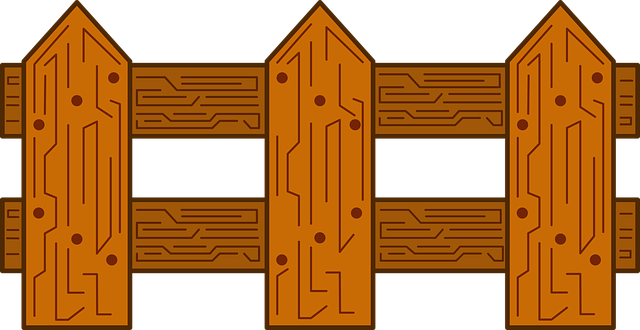For New Bedford, Massachusetts homeowners looking to enhance their outdoor spaces, installing a new fence offers both privacy and property value. This article is your comprehensive guide to navigating the DIY fence installation process. From understanding local regulations and planning your design to selecting robust materials and ensuring safe construction, we’ll equip you with practical tips for a successful project. By the end, you’ll be ready to transform your yard into a secure, aesthetically pleasing oasis.
- Understanding Your Fence Options for New Bedford Properties
- Measuring and Planning Your Fence Installation Project
- Choosing the Right Materials for Durability and Aesthetics
- Step-by-Step Guide to DIY Fence Construction
- Tips for Safety, Permits, and Post-Installation Maintenance
Understanding Your Fence Options for New Bedford Properties
When it comes to fencing your New Bedford, Massachusetts property, there’s a world of options available. From traditional wood picket fences to modern vinyl or iron alternatives, each material offers unique benefits and styles. Homeowners should consider factors like aesthetics, durability, maintenance requirements, and budget when choosing their fence type. Wood, for instance, provides a classic look but demands regular painting or sealing to withstand the region’s climate. Vinyl is low-maintenance and resilient against rot but may not offer as much customization in design. Iron fences exude elegance and security but can be more expensive and require specific care to maintain their finish.
Understanding local regulations is equally vital before installation. New Bedford, like many cities, may have specific guidelines on fence height, materials, and placement, especially near public spaces or property lines. Homeowners should check with the local building department to ensure their chosen fence complies with these rules, avoiding potential fines or legal issues during or after installation.
Measuring and Planning Your Fence Installation Project
Before you start installing your new fence, meticulous planning is essential. Begin by measuring the perimeter of the area where you want to place the fence. Take accurate measurements with a tape measure, noting any unique features or obstacles along the way. Consider the type of fence best suited for your space – privacy fences offer more seclusion, while picket fences provide a classic, decorative look.
Create a detailed plan by sketching out the layout on paper. Mark the positions of gates or posts, and ensure you have permission from neighbors if the fence will encroach onto their property. This planning stage is crucial to avoiding costly mistakes later and ensuring your DIY fence installation project runs smoothly.
Choosing the Right Materials for Durability and Aesthetics
When it comes to DIY fence installation, selecting the right materials is half the battle won. For New Bedford homeowners, opting for durable and visually appealing options will ensure your fence stands the test of time and enhances your property’s curb appeal. Wood, vinyl, and chain-link are popular choices, each with its unique advantages. Weather-resistant wood, like cedar or pressure-treated pine, offers a natural look but requires more maintenance. Vinyl fences are low-maintenance, color-lasting, and resistant to rot, making them an excellent choice for those seeking both functionality and aesthetics. Chain-link, though industrial in appearance, is sturdy and secure, ideal for areas requiring maximum privacy.
Consider your climate, local conditions, and personal style when making this decision. For instance, if you live in a snowy region, a warmer wood or vinyl might be more suitable. Additionally, think about the overall design of your property; a traditional look may complement Victorian homes, while modern designs could enhance a contemporary landscape.
Step-by-Step Guide to DIY Fence Construction
To embark on a DIY fence installation project, start by assessing your yard and deciding on the fence style and material that best suit your needs and preferences. For New Bedford homeowners, wood or vinyl fences are popular choices due to their aesthetic appeal and low maintenance requirements. Once you’ve made your selection, gather all necessary tools and materials—including posts, rails, panels, fasteners, concrete, and a measuring tape.
Next, mark the fence line with stakes and string for accurate measurement and positioning. Dig holes for the fence posts, ensuring they’re deep enough to provide stability against shifting soils. Set the posts in place, leveling them and securing them with concrete. After the concrete sets, attach horizontal rails to the posts using brackets or nails, followed by the fence panels. Ensure proper alignment and spacing between the panels, then fasten them securely to the rails. Lastly, add a gate or any additional features as desired, making sure it’s properly installed and swings freely.
Tips for Safety, Permits, and Post-Installation Maintenance
Safety First: Before beginning any DIY fence installation project, ensure you prioritize safety. Wear appropriate protective gear, including gloves, eye protection, and a hard hat if necessary. Familiarize yourself with the tools and equipment to avoid accidents. Keep a well-stocked first aid kit nearby for any minor injuries that may occur during construction.
Permits and Post-Installation: Check local regulations and obtain any required permits before starting your fence project in New Bedford, Massachusetts. These permits ensure your work complies with building codes and safety standards. After installation, maintain your new fence regularly to prolong its lifespan. Regular cleaning, inspection for damage, and timely repairs will keep it looking good and provide long-term functionality.
